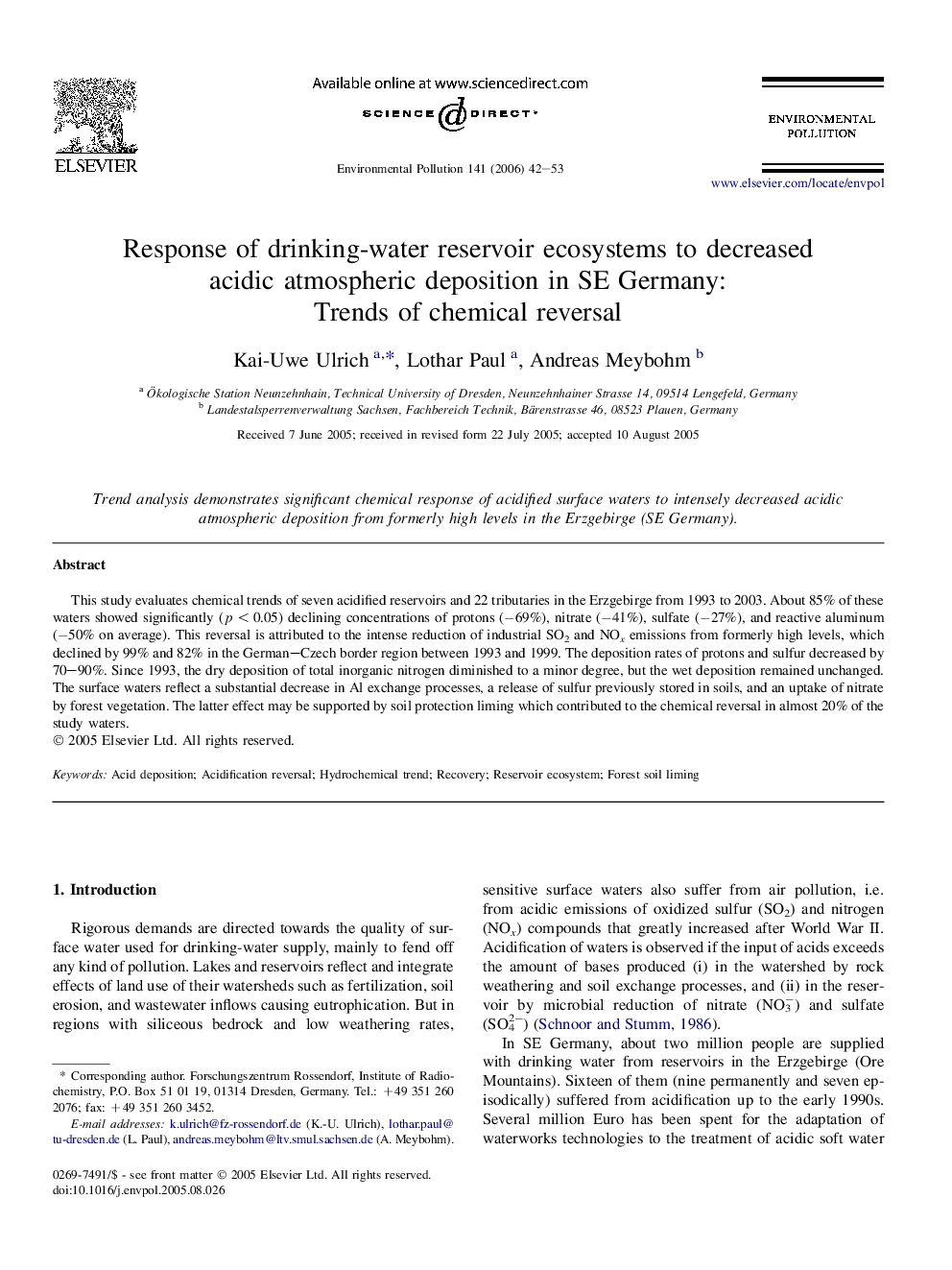| Article ID | Journal | Published Year | Pages | File Type |
|---|---|---|---|---|
| 4427670 | Environmental Pollution | 2006 | 12 Pages |
This study evaluates chemical trends of seven acidified reservoirs and 22 tributaries in the Erzgebirge from 1993 to 2003. About 85% of these waters showed significantly (p < 0.05) declining concentrations of protons (−69%), nitrate (−41%), sulfate (−27%), and reactive aluminum (−50% on average). This reversal is attributed to the intense reduction of industrial SO2 and NOx emissions from formerly high levels, which declined by 99% and 82% in the German–Czech border region between 1993 and 1999. The deposition rates of protons and sulfur decreased by 70–90%. Since 1993, the dry deposition of total inorganic nitrogen diminished to a minor degree, but the wet deposition remained unchanged. The surface waters reflect a substantial decrease in Al exchange processes, a release of sulfur previously stored in soils, and an uptake of nitrate by forest vegetation. The latter effect may be supported by soil protection liming which contributed to the chemical reversal in almost 20% of the study waters.
